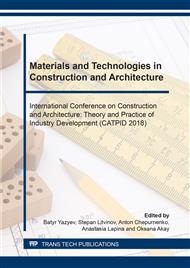p.432
p.436
p.443
p.451
p.455
p.461
p.469
p.475
p.481
The Efficiency of Using Building Energy Modeling in the Construction of High-Rise Buildings
Abstract:
The paper considers the approach to the assessment of the efficiency of the use of building energy modeling technology by the example of a 20-storey building located in Moscow. It has been suggested that the efficiency of the use of technology can be estimated by calculating the return on investment. However, Russian legislation requires a section in the design documentation for the energy efficiency of construction projects, which takes considerable time to develop, while the use of building energy modeling technology reduces the time needed to develop the information necessary to complete this section, which also confirms the effectiveness of technology implementation.
Info:
Periodical:
Pages:
455-460
Citation:
Online since:
September 2018
Authors:
Price:
Сopyright:
© 2018 Trans Tech Publications Ltd. All Rights Reserved
Share:
Citation:


